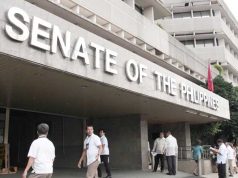First year of TRAIN raised P84B in extra revenue, reduced poverty slightly — study
LOWER personal income taxes and increased excise on key commodities generated additional revenue of over P84 billion for the government in the first year of the Tax Reform for Acceleration and Inclusion (TRAIN) Law, while reducing poverty and income inequality “very slightly,” according to a study published by a research institute affiliated with De La Salle University.
The study, “Assessing the Potential Impacts of the Tax Reform for Acceleration and Inclusion and the Build, Build, Build Program,” published by the university’s Angelo King Institute for Economics and Business Studies, found “clear increases in the capital stock which drive economic growth, with the industry sector leading the way and the services and agricultural sectors lagging.”
It said the government had increased capital available to spend on the flagship infrastructure program, known as “Build, Build, Build,” as well as its social programs like rice subsidies, fuel vouchers and unconditional cash transfers — safety-net items implemented to cushion the blow of higher fuel prices resulting from the increased excise tax.
“Results suggest that TRAIN I has prompted additional revenue in social programs and infrastructure spending,” according to the study.
Republic Act No. 10963 or the TRAIN Law, which went into force in January 2018, also raised excise taxes on sugar-sweetened beverages and automobiles.
Simulations conducted by the institute also estimated additional revenue of P136.2 billion in the second year — 2019 — and P184.7 billion and 185.6 billion in subsequent years.
It said the tax hikes added about 0.69% percentage points to inflation in 2018, while contributing less in 2019 — 0.54 percentage points and continuing downward through 2022, as “higher growth would significantly dominate the inflationary effects.”
It said tax reform has “reduced poverty and reduced income inequality very slightly” based on its simulations.
It added that a scenario that held personal income tax rates unchanged was found to possibly generate ”higher government revenue which may prompt higher spending and allocation to additional social programs and infrastructure in addition to higher economic growth and a greater reduction in poverty.” — Beatrice M. Laforga



